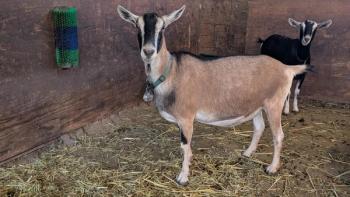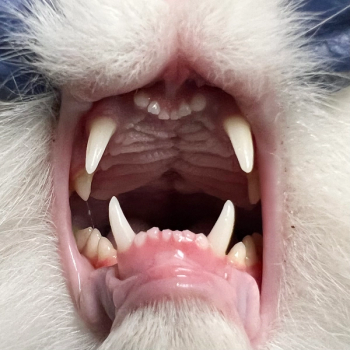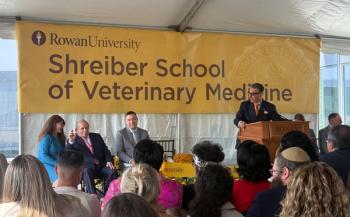
How to perform an abdominocentesis in a standing adult horse
Fluid analysis can provide important insights into how to manage colic and other troubling equine cases.
Getty ImagesAcute abdomen (colic), fever and weight loss are just a few of the reasons you might need to collect abdominal fluid in an adult horse. In many cases of acute abdomen, rapid and uncontaminated sampling of abdominal fluid can help you make important medical or surgical decisions.
With advances in biochemical testing and wide availability of equipment at reasonable cost, abdominal fluid analysis can be used to determine the difference between compromised bowel and septic or aseptic peritonitis, as well as whether surgical intervention is indicated. Interpretation of fluid analysis also gives you an indication of whether treatment or surgery will end with a successful outcome.
Several methods have been described for fluid collection, but I would like to share a simple technique and instrumentation that has increased the success rate of clean sampling during my years in private equine referral practice. In this article, I describe the technique of abdominal fluid collection in a standing sedated adult equine and share the type of instrumentation that I use to maximize the success rate.
Considerations
An abdominocentesis should be performed in a standing sedated horse that is appropriately restrained and preferably in stocks, if available. The location for fluid collection, unless indicated otherwise by ultrasound guidance, is the most dependent part of the abdomen just to the right of the ventral midline-this helps avoid penetration of the ventral curvature of the spleen.
After choosing the site, clip a 10-by-10-cm area and aseptically prep it with either povidone-iodine or chlorhexidine scrub and alcohol. There are multiple techniques for fluid collection, but in my experience, the use of a canine female catheter (I use one manufactured by Jorgenson) dramatically increases the success rate and ease of uncontaminated sampling as compared with attempted sampling with needles, spinal needles and teat cannulas. Why? The hole is near the tip on the side of the cannula, the material has a smooth surface and the tip is curved. In my opinion this allows for the peritoneum to tent up and then be punctured easily without entering other abdominal organs. Also, the hole on the side of the cannula seems to plug up with fat and omentum less readily.
Sometimes a syringe with air can be used to force fat and omentum out of the lumen, but I have learned that if you patiently and gently pass the catheter in and out a few times, you will much more frequently get a clean sample.
Supplies needed
Here's what you will need to perform this technique:
- Appropriate intravenous sedation
- A nose twitch/lip chain
- Clippers (No. 40 or no. 50)
- Chlorhexidine- and alcohol-soaked 4-by-4 gauze sponges or other aseptic preparation materials
- Lidocaine or mepivacaine to perform a local skin, subcutaneous and underlying muscle block; use a 3-ml syringe and 25-ga 0.5-in needle
- A No. 15 blade for skin and abdominal wall incision
- A canine female catheter
- Dry gauze 4-by-4s
- Sample collection tubes (red, purple and green tops).
The procedure
Gather the supplies for collecting the sample on a clean countertop or surface (Photo 1). It's helpful to use a No. 15 blade to cut a small hole in the center of two sterile gauze 4-by-4s and place the canine female catheter through the hole; this prevents blood from dripping down into the collection tubes from the skin and muscle incision.
Photo 1: Supplies needed include local anesthetic, collection tubes, gauze pads and a canine female catheter.
Step 1. With the patient restrained and under adequate standing sedation and the area aseptically prepared, perform a local block at the collection site where the No. 15 blade and catheter will be inserted with about 3 ml of lidocaine or mepivacaine using a 25-ga 0.5-in needle directly perpendicular to the skin. Insert the needle to the hub with fanning of local anesthetic into the musculature, leaving a visible subcutaneous bleb.
Step 2. Holding a No. 15 blade at the junction of the blade end and handle shaft, make a small stab incision through the skin and continue it upward through the fascia and external musculature of the rectus abdominus until you've reached the end of the bevel of the no. 15 blade. Remove the blade.
Step 3. Place the canine female catheter tip within the skin incision and move the tip around until you find the body wall incision. Once you find the incision, hold the catheter about 2 inches from the tip so you can apply adequate upward pressure to avoid abrupt slippage when the abdomen is fully penetrated. Use pressure perpendicular to the body wall such that the catheter can be gently fed through the abdominal musculature and into the abdomen. The peritoneum will tent dorsally and ultimately the catheter will penetrate through it. It may take more pressure and require more of the catheter length than you might imagine, especially in large or overweight horses. Most of the time you can feel a distinct “pop” or change in resistance, which indicates that the peritoneum has been penetrated.
Step 4. Unless there is increased fluid volume within the abdomen, you will need to retract the catheter slightly to obtain fluid. Sometimes you will need to rotate, twist or pass the catheter deeper and draw it back out again before you obtain fluid. Very rarely inadvertent penetration of the intestine (enterocentesis) or spleen will occur. Both circumstances rarely, if ever, result in any complication. I consider starting the patient on broad-spectrum systemic antibiotics after an inadvertent enterocentesis, but I have never seen a clinical problem result from an abdominocentesis.
Step 5. Collect the abdominal fluid in the purple-, green- and red-top tubes for sample analysis. Until you've practiced the procedure aseptically several times, it's helpful to have an assistant hold the blood tubes for you to catch the fluid sample as it egresses from the bottom of the catheter. Once you have obtained an adequate amount of fluid for analysis, remove the catheter, apply upward compression to the site with sterile 4-by-4s for a few minutes if you encountered a skin vessel, and leave the stab incision to heal on its own without any additional treatment.
Click below to watch a video of the author performing this procedure:
This procedure can be repeated as needed to evaluate change in fluid analysis parameters over time, if diagnosis is unclear at initial workup, or if you want to assess response to medical therapy (in the case of aseptic peritonitis).
Fluid analysis
Complete review of fluid analysis is beyond the scope of this article. However, the analyses most readily available in most clinical settings are: gross examination of sample color and clarity, total protein concentration, the total white blood cell count (including the percentage of neutrophils), and the lactate concentration.
Normal abdominal fluid should be straw-colored and clear. A normal protein concentration is < 2 g/dl. The total white blood cells should be < 5,000 cells/μL and < 90% neutrophils. Lactate concentrations should always be compared to systemic blood lactate. In a normal horse the abdominal lactate concentration will be the same or less than blood; normal lactate concentrations are < 2 mmol/L.
Many other factors go into the decision making process for medical versus surgical treatment of colic, but if you're faced with a horse that has an altered (cloudy or bloody) sample and increased total protein and lactate concentrations, there is an increased concern that ischemic injury could be occurring, necessitating surgical intervention.
Dr. William A. Symm is an ACVS board-certified large animal veterinary surgeon with Town and Country Animal Hospital in Kerrville, Texas. In addition to his clinical duties, Symm enjoys spending as much time with his family and in the outdoors as possible.
Newsletter
From exam room tips to practice management insights, get trusted veterinary news delivered straight to your inbox—subscribe to dvm360.






